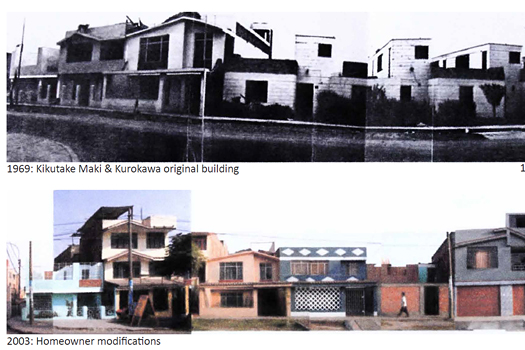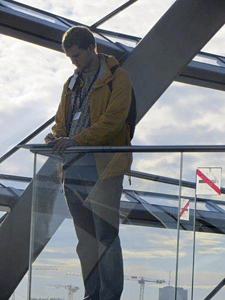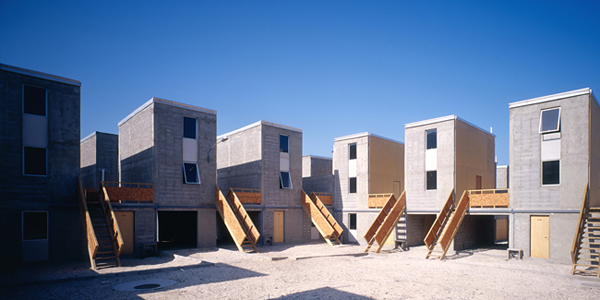A tour of South America’s biggest cities might seem like a good way to enjoy the first summer after college. But for two NC State architecture grads, it’s also an exciting opportunity to enhance their global perspective.
Next month, Brian Gaudio and Abe Drechsler will travel to the southern hemisphere to explore urban housing projects in Lima, Peru; Bogotá, Colombia; Santiago, Chile; and Rio de Janeiro and São Paulo, Brazil.
“Sometimes students feel pressured to study architecture that is considered high design or architecture that is critically acclaimed,” says Gaudio. “We’re traveling to South America to study the overlap of formal and informal cities.”
In other words, they’ll be visiting many of the continent’s slums and shantytowns.
Flexible Approach
There’s plenty to learn from the way South American cities have adapted to complex social and economic challenges over the years, Gaudio says, even if they haven’t solved the root causes.
For example, Gaudio and Drechsler will visit Lima’s Experimental Housing Project, known by its Spanish acronym, PREVI, which was developed in the mid-1960s to provide low-rise, high-density housing for the urban poor. PREVI models were developed by some of the world’s most influential young architects, including James Stirling, Charles Correa and Christopher Alexander.

Built on public lands, the PREVI neighborhoods were designed to encourage informal growth.
“The infrastructure was there but there were ways to add on to it,” Gaudio says. “So people could add to it vertically or they could add to it horizontally as they got the money and the means.”
It’s a model that still works for the hundreds of families that reside there. But it’s not the only example of people-centered urban design in South America. Gaudio and Drechsler’s itinerary includes visits to the Quinta Monroy neighborhood in Iquique, Chile, and the Grotão area of São Paulo, site of a proposed community space that includes a music school, rehearsal studios, sports facility and public transportation.
“We’re also considering visiting cities like Medellin, Columbia, that have become famous for their innovative approaches to solving urban design challenges,” Drechsler says. “This work will become increasingly important for designers and architects as the world continues to urbanize and populations in developing nations continue to grow.”
New Travel Fellowship
The lion’s share of the money for the trip comes from a new funding source in the College of Design, the Linda and Turan Duda Traveling Fellowship, available to architecture graduates who have demonstrated academic and design excellence.

As the first recipients of the new fellowship, Gaudio and Drechsler are committed to setting a high standard for their project.
“This isn’t just a travel study,” Gaudio says. “We see it as an opportunity to raise awareness of the importance of housing around the world and to inspire students from our generation who are interested in these issues.”
During the trip, Gaudio and Drechsler plan to meet with community leaders and architects at the forefront of urban design innovation in the region, including Urban Think Tank in São Paulo and Elemental in Santiago. Along the way, they’ll take photos, create drawings and capture video footage that they’ll incorporate into an educational presentation when they return to the United States.
They hope to share their findings with a larger audience through outreach programs at the Hunt Library, the Institute for Emerging Issues and the Urban Design Conference.
South to North
Ultimately, Gaudio says, North Americans may face many of the same challenges that have historically confronted their neighbors to the south, from the lack of affordable housing to the need for sustainable transportation systems.

“The global south has had to live within its means out of necessity,” he says. “Now we’re going to have to reduce our environmental footprint here in the north. It’s important to look at how people are dealing with challenges in the south that apply to us in the north.”
Gaudio, who plans to pursue a career in public interest design, says interdisciplinary collaboration is the key to developing innovative solutions to society’s most vexing problems.
“Architecture alone cannot solve the housing problem,” he says. “There are environmental issues, policy and tax issues and social service challenges that go into this.”
But, he says, the first step is getting out of the office and into the field.
“As architects trained in the College of Design, we learn by doing,” he says.
“NC State gave us the tools to research and design for these communities,” Drechsler adds. “Now it is our turn to act.”
- Categories:



